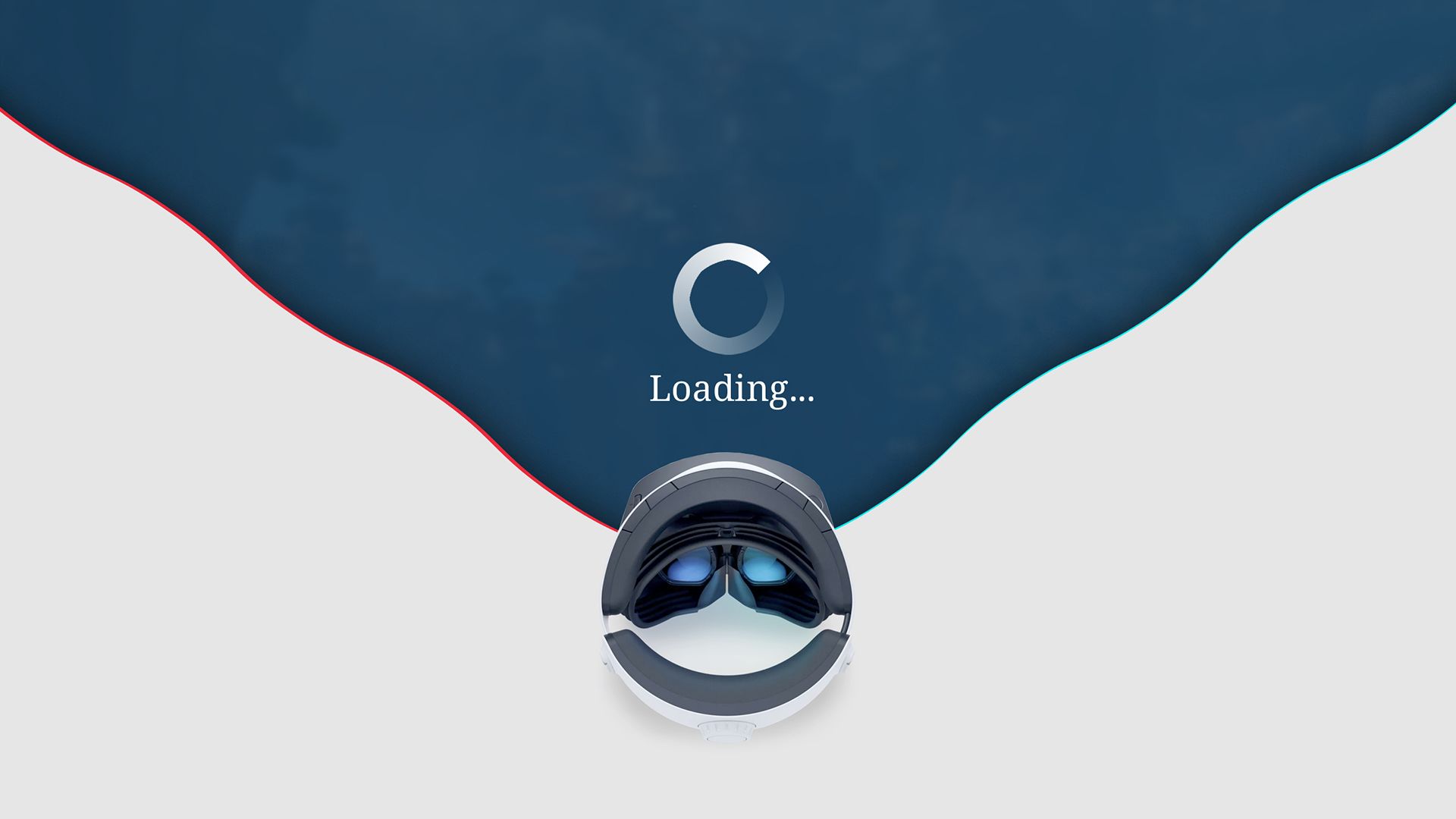
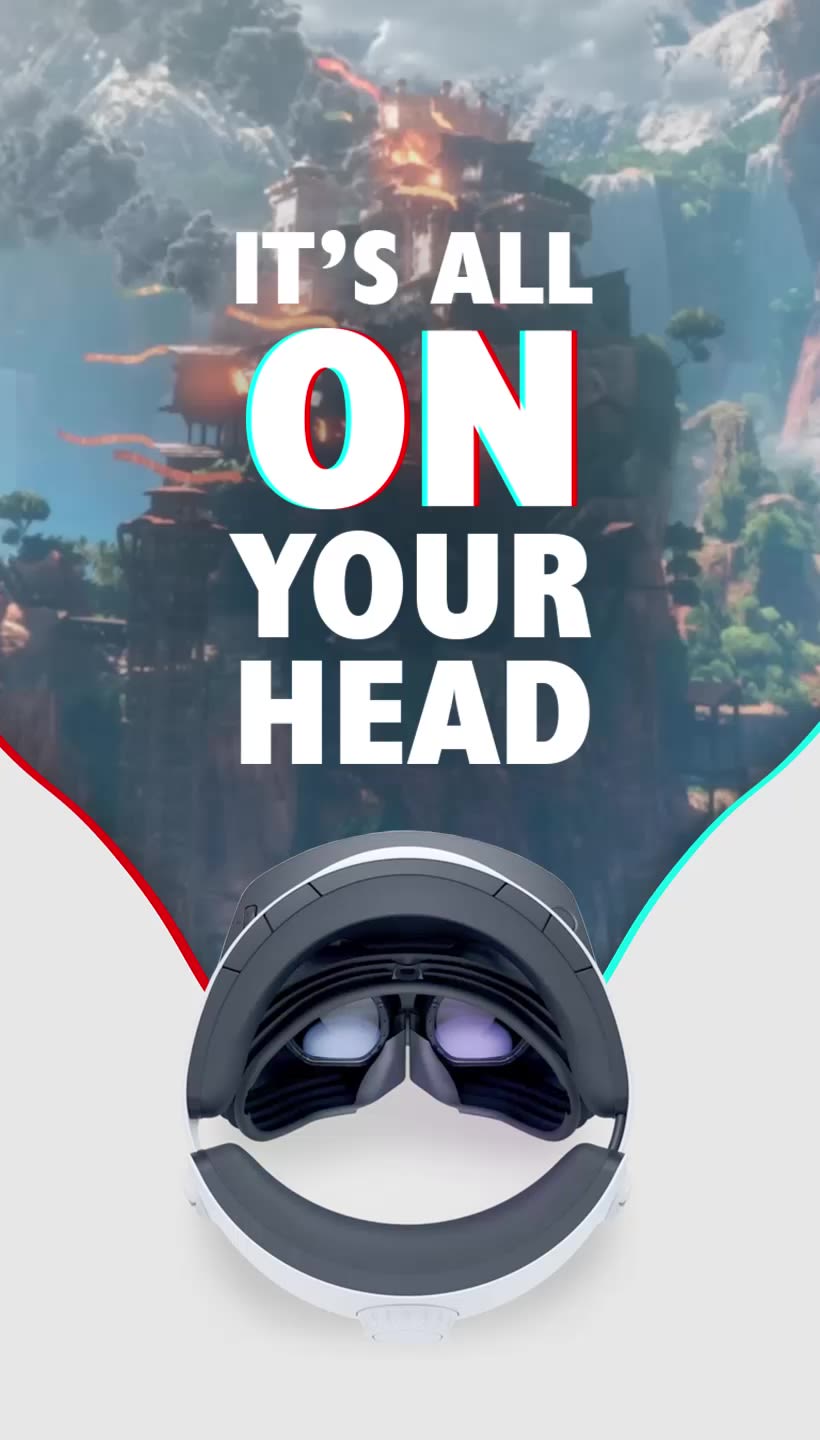
Several years into the ready availability of virtual reality gear for home use, the
technology still hasn’t made the sort of waves on the gaming scene many
anticipated. Undeterred, Sony has doubled down with the PSVR2,
a VR experience designed to make the most of the
power of the PS5. Ben Allan straps it to his face
and dives into some virtual worlds.

Several years into the ready availability of virtual reality gear for home use, the technology still hasn’t made the sort of waves on the gaming scene many anticipated. Undeterred, Sony has doubled down with the PSVR2, a VR experience designed to make the most of the power of the PS5. Ben Allan straps it to his face and dives into some virtual worlds.


Sounds cool, doesn’t it?
Like the video gaming of the future; the thing that’s going to suck us into The Matrix or Ready Player One because it is so much better than reality, turning us all into plugged-in, Wall-E style human blobs. But somehow, though it’s been around for a bit, we haven’t quite started rejecting actual reality en masse yet.
Sony is now back for another crack at the future of gaming with PSVR2, an upgrade aimed at taking us another step closer to all those sci-fi stories. And after a few weeks with it and a handful of launch titles, I’d have to say it makes a pretty decent stride.




Literally straight out of the box, PSVR2 impresses with how straightforward it is to use. There’s no series of bits and pieces — like an external camera or chunky power boxes to worry about — all its clever tech has been packed into its headset, which simply plugs into the front of your PS5 via its generously-long, standard USB cable (you’ll need that for roaming your lounge later), and its lightweight ‘‘Sense’’ controllers, which you put your hands into a bit like boxing gloves.
One of the impediments to widespread uptake of VR has been that it’s not that comfortable to strap a big piece of equipment to your head. And all the tech that’s been packed into PSVR2 does make it a bulky sort of a device — but crucially, one that remains pretty comfortable to wear for gaming sessions of an hour or two.
Putting the headset on is a matter of just pressing a button that slides the lens unit forward, popping the whole thing on your head, sliding the lens unit back over your eyes, then tightening the strap at the back with an easy-to-find dial to make everything nice and snug. If you need to see where you are in the real world, a button on the front right of the lens will switch the view from whatever you’re doing in-game to the headset’s external cameras. It’s essentially the view you’d get from your eyeballs, but filmed instead and screened for you a few centimetres from your eyes — a weird sort of experience that’s a bit like putting on night-vision goggles, but very handy if you have a sense that you’re about to trip over the cat.

Weight distribution feels even, and there are no obvious pressure points. I managed sessions of up to 90 minutes or so without getting much in the way of a sore head or neck. I did find that some of the delicate flaps of rubber under the eyes and around the nose that are there to keep light out could get a bit tickly at times, but it wasn’t a major irritation.
A lens adjusting dial on the left front of the headset also makes it easy to finally tune the distance between the lenses to make things nice and clear, so you can avoid that blurry effect that can end up contributing to motion sickness. I’m not typically affected much by that — so take this with a grain of salt, as it may be different for you — but I haven’t really experienced it using the PSVR2 at all, beyond the odd dizzy moment in Horizon or After the Fall.
The main comfort issue I faced was a build-up of heat inside the headset over time, and if you’ve been playing something active for a while, it’s a good idea to take a hydration break and deal with any moisture inside the headset with a dry cloth.
A pair of earbuds that come with the headset plug into the headphone jack at the back, or you can use any other earphones or headphones you’d like, if you can work round the headset with them. And the lenses themselves offer an excellent picture, with sharp definition and bright, vivid colours — for the technically minded, this is thanks to the 2000×2040-pixel resolution displays it plonks in front of each of your eyes, which puts it towards the top of what is available. It’s an easy-to-use, well designed bit of kit that makes the whole somewhat awkward physical experience of using a gaming headset just about as seamless as it can be.

Setting up to play is similarly easy. When you boot up the headset, you’ll be prompted to calibrate your play space, which is simply a matter of looking around the room you’re in so PSVR2 can map your available floor space. It generally does a great job of spotting obstacles and setting a perimeter, but you can also manually adjust the boundaries of your designated play area with the controller if needed. The whole thing typically takes less than a minute. PSVR2 will then check in on your last saved play area each time you start playing, to ensure no coffee tables have snuck into it surreptitiously, and prompt a recalibration if needed. If you’re switching to playing a game seated, PSVR2 will work out that you’ve parked yourself and prompt you to set up a temporary cylindrical play area centred around where you’re sitting. Near your boundaries in any game, virtual walls will flash up on your display to alert you that you’re getting a bit close to the piano. It seems a finely calibrated system, and we’re yet to have any physical-world accidents while using the headset, even in our relatively small lounge.
Your initial calibration will also set up eye tracking, perhaps PSVR2’s fanciest new feature. Put simply, PSVR2 can tell what you’re looking at. Games I tried used this in ways as simple as being able to look at the dialogue option you want to select, and as complicated as characters seemingly reacting to the eye contact you’re making with them. It’s neat, and it will be interesting to see what cool ways future titles might come up with to use it.
PSVR2’s controllers similarly have a lot of potential that’s waiting to be explored. Not only do they offer excellent, accurate tracking of your hands in the virtual space, but they can also sense your finger movement. In Horizon, for example, I could point or make a thumbs-up in real life and have those actions mirrored by my in-game character’s hands. The placement of buttons, triggers and thumbsticks (one on each hand) is also easy to get to grips with for those familiar with more traditional gaming controllers — it’s a lot like handling a traditional Playstation controller that’s been snapped into two halves. Whether you’re firing a bow and arrow, thrashing a guitar, or flailing your giant tentacles around, these things work, and before too long you’ll be grabbing, catching and throwing things around in virtual space like you were born to it. The haptic feedback in the controllers also gives making actions in games a physical sensation, adding to your sense of immersion.

PSVR2 is, then, a seriously good piece of technology — although it needs to be, as retailing for about $1000 in New Zealand, it costs more than the PS5 you’ll be plugging it into. There’s perhaps another reason to wait for that price to come down too, as while there are quite a few game titles available at launch, most are upgrades of older VR titles — with the notable exception of Sony’s own Horizon: Call of the Mountain — which play well, but aren’t designed from the ground up to make the most of PSVR2’s capabilities. Hopefully, more studios will get on board with what the kit can really do.
Early — and cashed-up — adapters, though, might want to jump on board now for an exciting look at what VR might really be capable of.
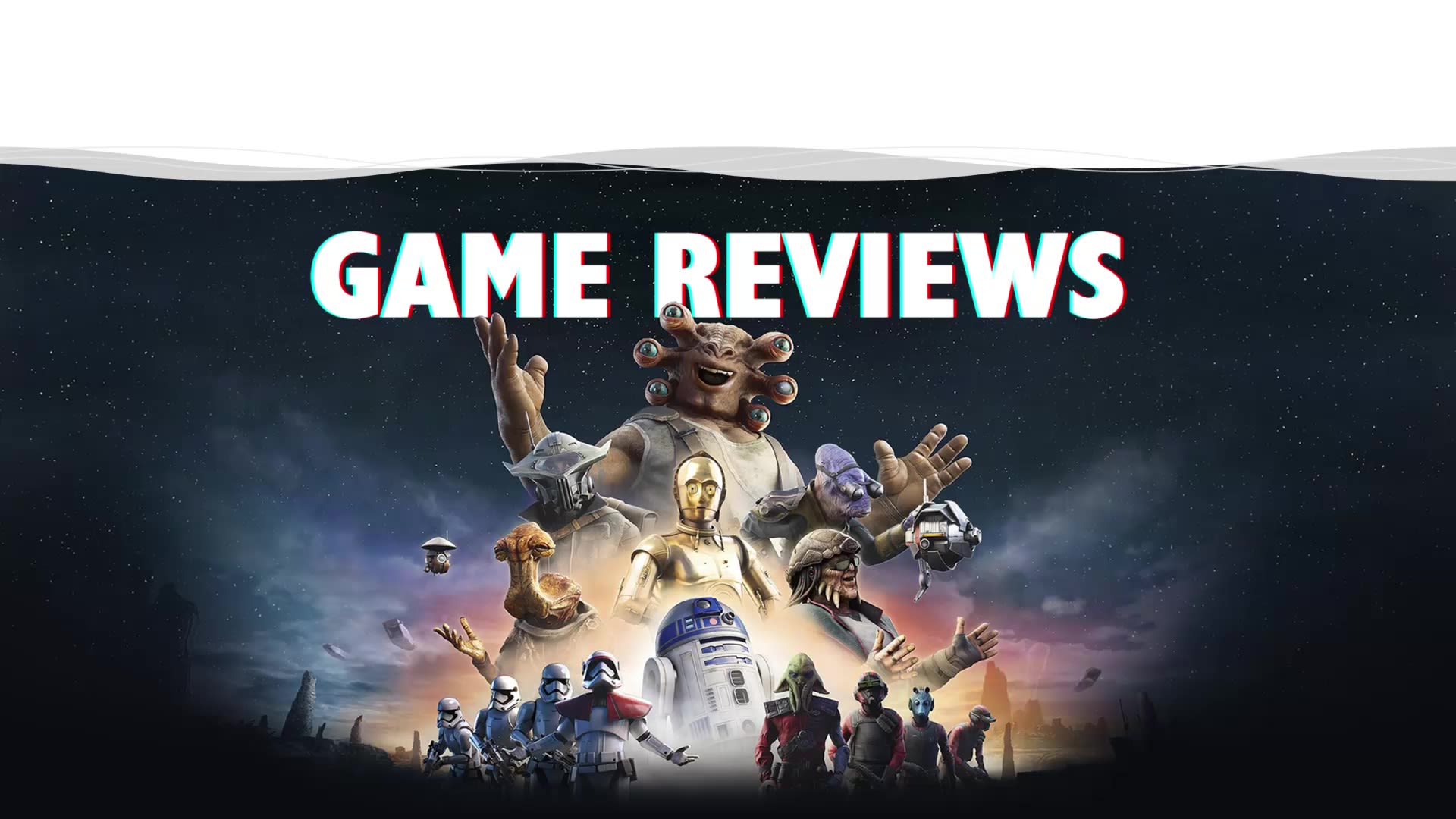
Star Wars:
Tales From the Galaxy's Edge

Star Wars: Tales From the Galaxy's Edge gives players a chance to strap on a blaster (or four) and have their own adventure in the galaxy far, far away. Set in the sequel era of the Star Wars timeline, in puts the player in the shoes of a droid technician who is swept up into a conflict first with space pirates, and then Empire cosplayers the First Order. It is largely based on Batuu, the planet created for Disney’s Star Wars theme park attraction, so in between missions, you can look out the window from your home base at Seezelslak’s cantina and get a view of the parked Millennium Falcon that’s similar to what you would experience at Disneyland.

Gameplay sees you popping out to various parts of Batuu — rocky outcrops, sulphurous springs, and Jedi temples among them — on various fetch quests that are really excuses to get into gunfights.
And for anyone who’s grown up on Star Wars, these are tremendous fun. All weapons have limited ammo, so you’re always scrambling around to pick up a new one from either the ground or one of your multiple holsters, making things nicely chaotic; and yes, if you run out of ammo at a bad time you can throw your empty gun at your enemies instead, John Wick style.
If you want to feel like a hero in your own lounge on a random Tuesday evening, there are few better options than rounding a corner to come face-to-face with two evil members of the Guavian Death Gang, reaching up behind each shoulder to smoothly unholster a laser-shotgun for each hand, and meting out some galactic justice. It’s a relatively short experience, but will be a reliable thrill for any fan of the venerable franchise who wants to unleash their inner Han Solo.

Star Wars:
Tales From the Galaxy's Edge

Star Wars: Tales From the Galaxy's Edge gives players a chance to strap on a blaster (or four) and have their own adventure in the galaxy far, far away. Set in the sequel era of the Star Wars timeline, in puts the player in the shoes of a droid technician who is swept up into a conflict first with space pirates, and then Empire cosplayers the First Order. It is largely based on Batuu, the planet created for Disney’s Star Wars theme park attraction, so in between missions, you can look out the window from your home base at Seezelslak’s cantina and get a view of the parked Millennium Falcon that’s similar to what you would experience at Disneyland. Gameplay sees you popping out to various parts of Batuu — rocky outcrops, sulphurous springs, and Jedi temples among them — on various fetch quests that are really excuses to get into gunfights.
And for anyone who’s grown up on Star Wars, these are tremendous fun. All weapons have limited ammo, so you’re always scrambling around to pick up a new one from either the ground or one of your multiple holsters, making things nicely chaotic; and yes, if you run out of ammo at a bad time you can throw your empty gun at your enemies instead, John Wick style. If you want to feel like a hero in your own lounge on a random Tuesday evening, there are few better options than rounding a corner to come face-to-face with two evil members of the Guavian Death Gang, reaching up behind each shoulder to smoothly unholster a laser-shotgun for each hand, and meting out some galactic justice. It’s a relatively short experience, but will be a reliable thrill for any fan of the venerable franchise who wants to unleash their inner Han Solo.


Moss
& Moss:
Book II

In Moss and Moss Book II, you oversee and assist the adventures of Quill, a young mouse warrior on a quest to save the land from dark forces in a fantasy land of cute little mouse-sized castles and magical portals that lead to conversations with grumpy magical toads. Taking the role in the game of “The Reader”, a “silent giant” who is destined to aid Quill on her quest, you perch above stages the mouse will have to navigate through, the effect being a bit like sitting next to a huge table with a detailed, room-sized model on it.

Your left thumbstick drives Quill around the stage, while you can also reach out into the level with your controllers to help her progress by interacting with the environment to do things like rotating stairs, raising platforms, and taking control of the nasty little enemy bugs that mean her harm. With plenty of platform-puzzling to work out, this can sometimes mean scenarios like reaching out to grab something with one hand, holding a bug at bay with the other, and piloting Quill around all the while on the stick — a test of co-ordination, though one that never feels too awkward. And it’s all worth it, as solving a major puzzle to progress will see Quill look up to you for a high five, which you can reach out to deliver. Is high-fiving this plucky little mouse the most adorable thing ever? Yes. Yes it is.
Book II, a straight story continuation, doesn’t really reinvent the winning formula, but adds some new weapons and abilities for Quill that offer some variety in the combat and platforming. They’re charming games with plenty of imagination on display. Quill’s adventures also simply wouldn’t work as well as they do without VR, and they’re a perfect demo of what the medium can offer.



Horizon:
Call of the Mountain

If there’s anything approaching a ‘‘system seller’’ title for PSVR2, it would be Horizon: Call of the Mountain, created by Sony’s own studio especially for the system from the ground up, and piggybacking on the critical success and popularity of the Horizon series, which pits a tribal future humanity against the machine-beasts of a post-apocalyptic far future.
The game opens with a blockbuster boat trip that really doubles as Sony going “Look at what this thing can do!”, complete with colossal beasts, lush foliage, and close-encounter thrills, and this is the spirit in which the game goes on.
You play as Reyas, a mistrusted former prisoner tasked with following his brother up into — where else — the mountains, which is a convenient excuse for the game to bombard you with the spectacular, nature-reclaiming-a-ruined-world vistas that have become standard in the series. Except now, you’re in them — and a lot of the time, dangling precariously over them. Get ready to do a lot of climbing in Call of the Mountain, as you reach up and out with your controllers to grab handholds and help Reyas to scramble up cliff faces, rusted hulks, sheer ice faces and more besides. A glance downwards will often confirm that yes, you’re very high up — and it really feels like it, too — so it’s lucky the climbing action is nice and intuitive, although a moment of ice breaking under your axe, or jumping out into the void aiming at a single dangling rope, is still heart-in-mouth stuff (bonus thrills; accidentally releasing your grip on a handhold too soon, but flinging a desperate hand out in time to catch a lower one as you start to fall). In between climbing sections, Reyas is plunged into combat with the Horizon world’s machine-monsters, many of them gigantic. Combat is mostly roped off into circular arenas, restricting free movement so that you can strafe round the perimeter with the bad guys in the middle, pinging away with your bow and arrow — which yes, you have to fire like a bow and arrow — and avoiding enemy attacks — and yes, you can duck things by, um, ducking. Away from fighting and climbing, there’s a range of wonderfully tactile stuff to do; piling up rocks in cairns, rooting through baskets for resources, chomping on pears, locking gazes with an NPC or even doing a spot of cave painting. Sometimes you’ll want to stand on a cliff edge to just take it all in — and then lob an apple into a crevasse just to watch it bounce 500 metres down. If it feels a bit more like a tech demo than a game sometimes, it’s still a spectacular experience that’s a tonne of fun to play, and an exciting advertisement for what might be possible with PSVR2 in the future.

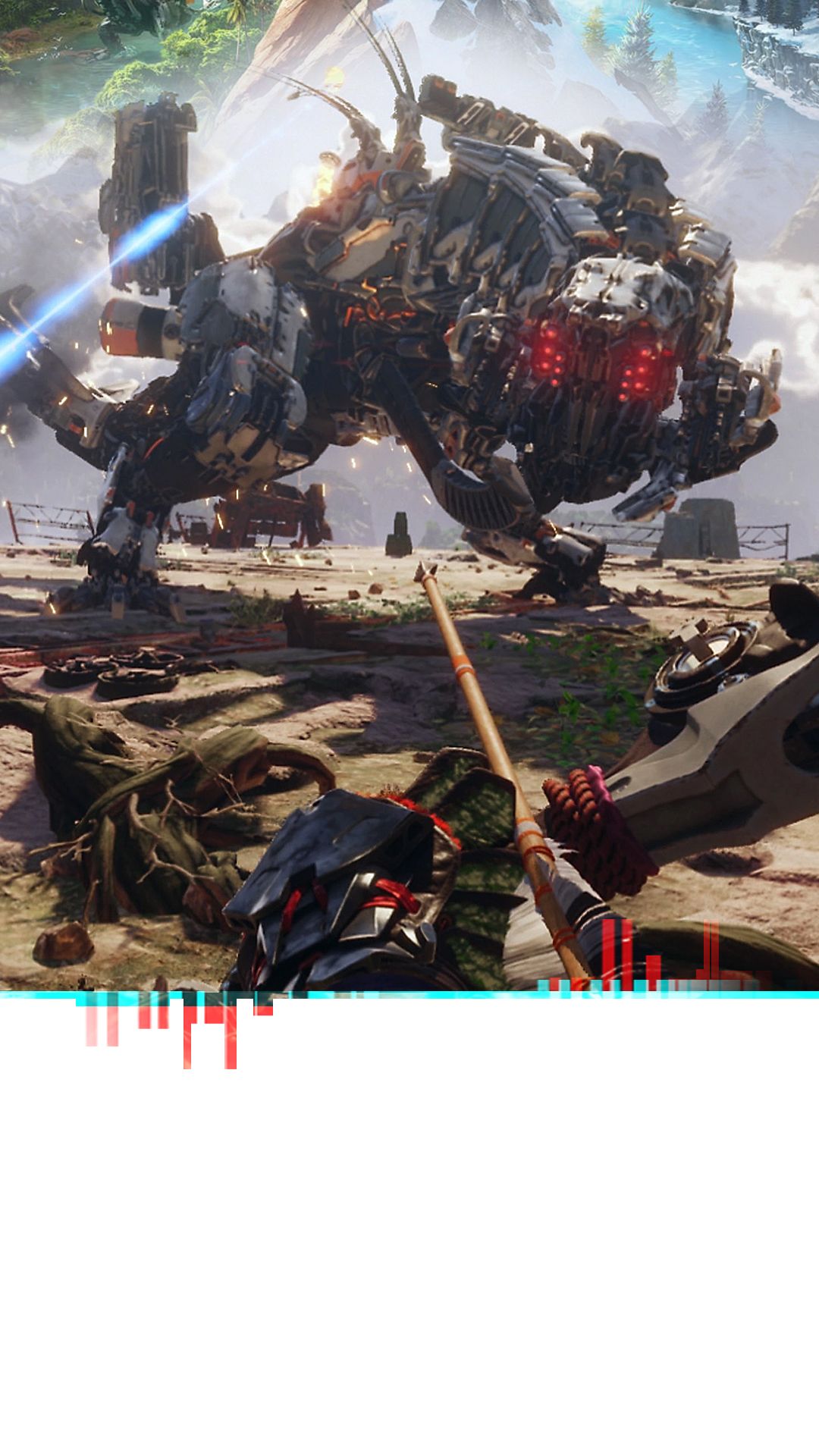

Moss
& Moss:
Book II

In Moss and Moss Book II, you oversee and assist the adventures of Quill, a young mouse warrior on a quest to save the land from dark forces in a fantasy land of cute little mouse-sized castles and magical portals that lead to conversations with grumpy magical toads. Taking the role in the game of “The Reader”, a “silent giant” who is destined to aid Quill on her quest, you perch above stages the mouse will have to navigate through, the effect being a bit like sitting next to a huge table with a detailed, room-sized model on it. Your left thumbstick drives Quill around the stage, while you can also reach out into the level with your controllers to help her progress by interacting with the environment to do things like rotating stairs, raising platforms, and taking control of the nasty little enemy bugs that mean her harm. With plenty of platform-puzzling to work out, this can sometimes mean scenarios like reaching out to grab something with one hand, holding a bug at bay with the other, and piloting Quill around all the while on the stick — a test of co-ordination, though one that never feels too awkward. And it’s all worth it, as solving a major puzzle to progress will see Quill look up to you for a high five, which you can reach out to deliver. Is high-fiving this plucky little mouse the most adorable thing ever? Yes. Yes it is. Book II, a straight story continuation, doesn’t really reinvent the winning formula, but adds some new weapons and abilities for Quill that offer some variety in the combat and platforming. They’re charming games with plenty of imagination on display. Quill’s adventures also simply wouldn’t work as well as they do without VR, and they’re a perfect demo of what the medium can offer.









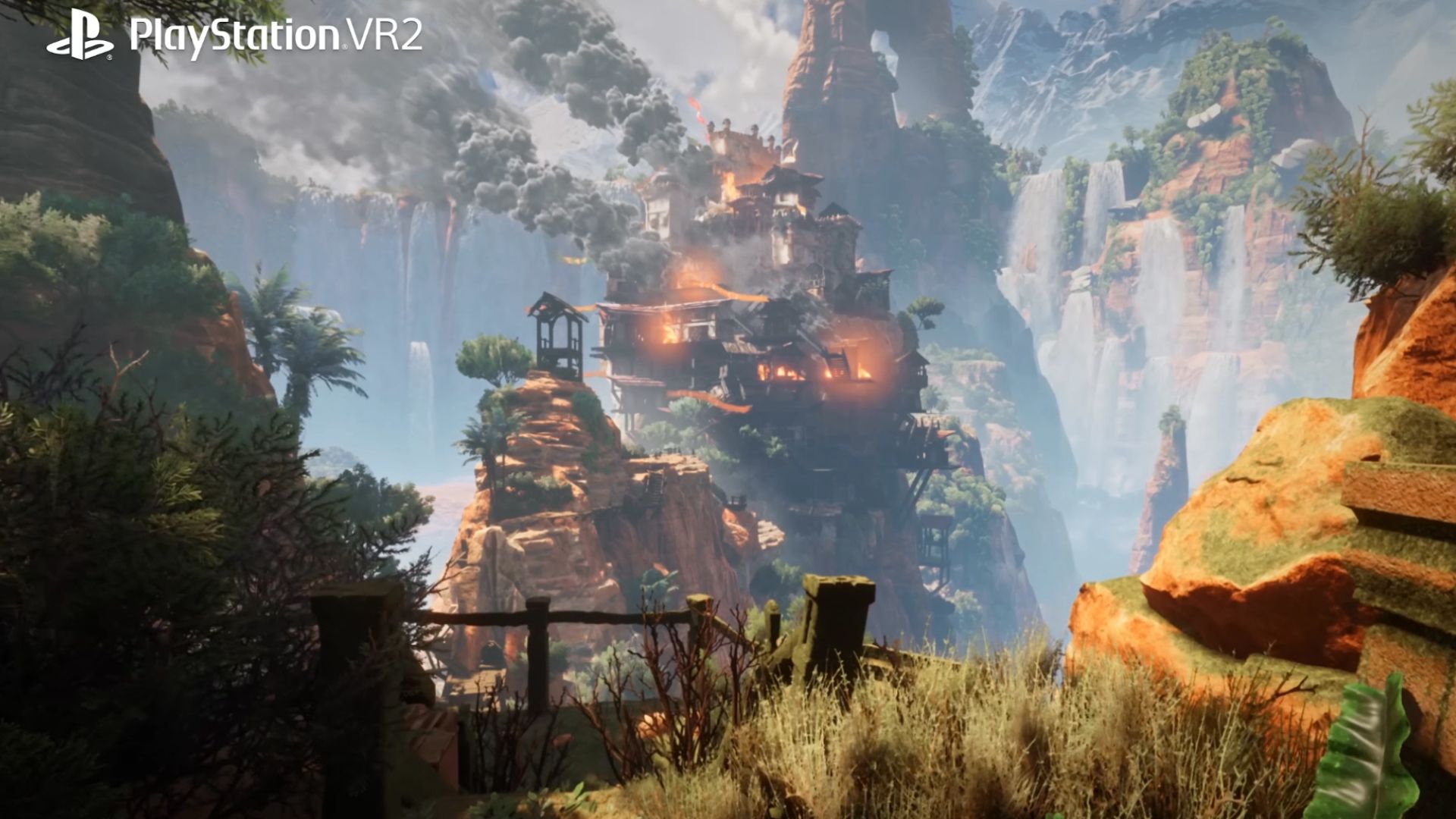
Horizon:
Call of the Mountain

If there’s anything approaching a ‘‘system seller’’ title for PSVR2, it would be Horizon: Call of the Mountain, created by Sony’s own studio especially for the system from the ground up, and piggybacking on the critical success and popularity of the Horizon series, which pits a tribal future humanity against the machine-beasts of a post-apocalyptic far future.
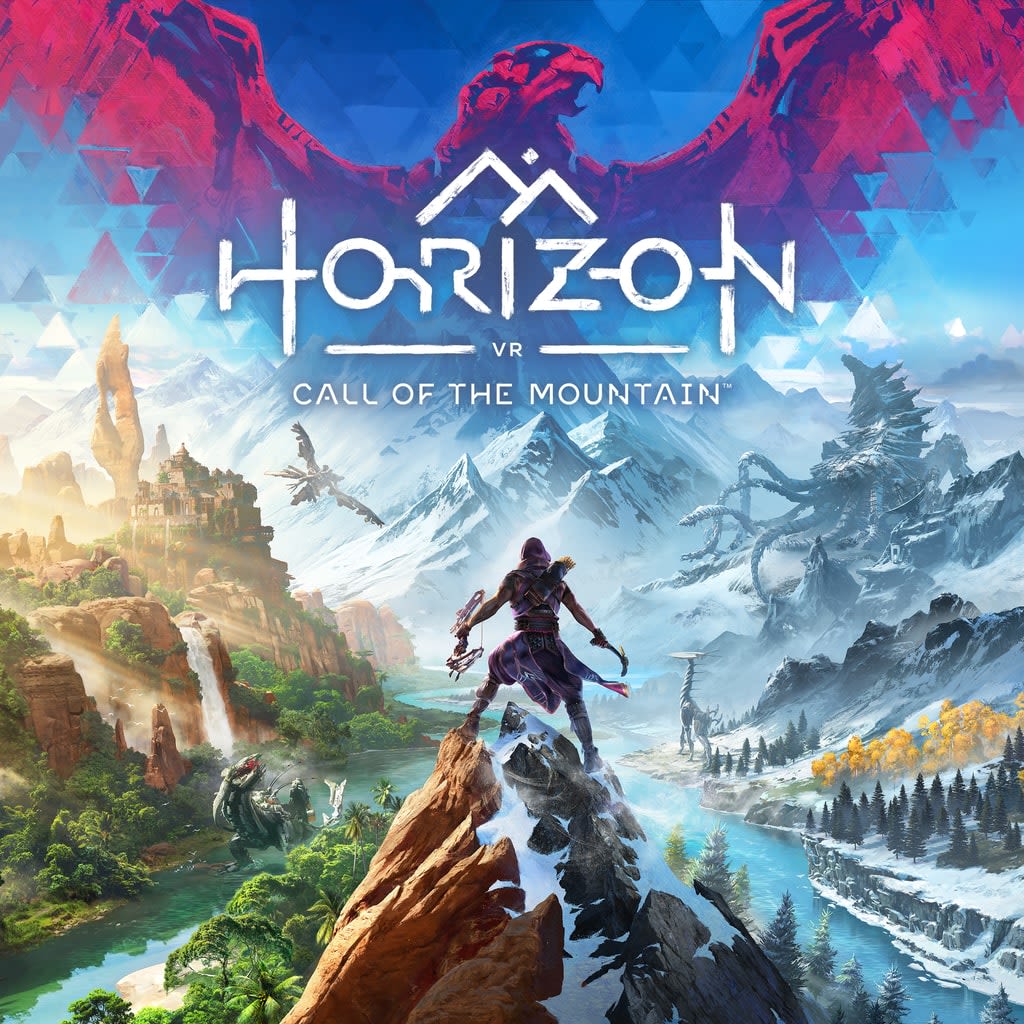
The game opens with a blockbuster boat trip that really doubles as Sony going “Look at what this thing can do!”, complete with colossal beasts, lush foliage, and close-encounter thrills, and this is the spirit in which the game goes on. You play as Reyas, a mistrusted former prisoner tasked with following his brother up into — where else — the mountains, which is a convenient excuse for the game to bombard you with the spectacular, nature-reclaiming-a-ruined-world vistas that have become standard in the series. Except now, you’re in them — and a lot of the time, dangling precariously over them. Get ready to do a lot of climbing in Call of the Mountain, as you reach up and out with your controllers to grab handholds and help Reyas to scramble up cliff faces, rusted hulks, sheer ice faces and more besides. A glance downwards will often confirm that yes, you’re very high up — and it really feels like it, too — so it’s lucky the climbing action is nice and intuitive, although a moment of ice breaking under your axe, or jumping out into the void aiming at a single dangling rope, is still heart-in-mouth stuff (bonus thrills; accidentally releasing your grip on a handhold too soon, but flinging a desperate hand out in time to catch a lower one as you start to fall). In between climbing sections, Reyas is plunged into combat with the Horizon world’s machine-monsters, many of them gigantic. Combat is mostly roped off into circular arenas, restricting free movement so that you can strafe round the perimeter with the bad guys in the middle, pinging away with your bow and arrow — which yes, you have to fire like a bow and arrow — and avoiding enemy attacks — and yes, you can duck things by, um, ducking. Away from fighting and climbing, there’s a range of wonderfully tactile stuff to do; piling up rocks in cairns, rooting through baskets for resources, chomping on pears, locking gazes with an NPC or even doing a spot of cave painting. Sometimes you’ll want to stand on a cliff edge to just take it all in — and then lob an apple into a crevasse just to watch it bounce 500 metres down. If it feels a bit more like a tech demo than a game sometimes, it’s still a spectacular experience that’s a tonne of fun to play, and an exciting advertisement for what might be possible with PSVR2 in the future.





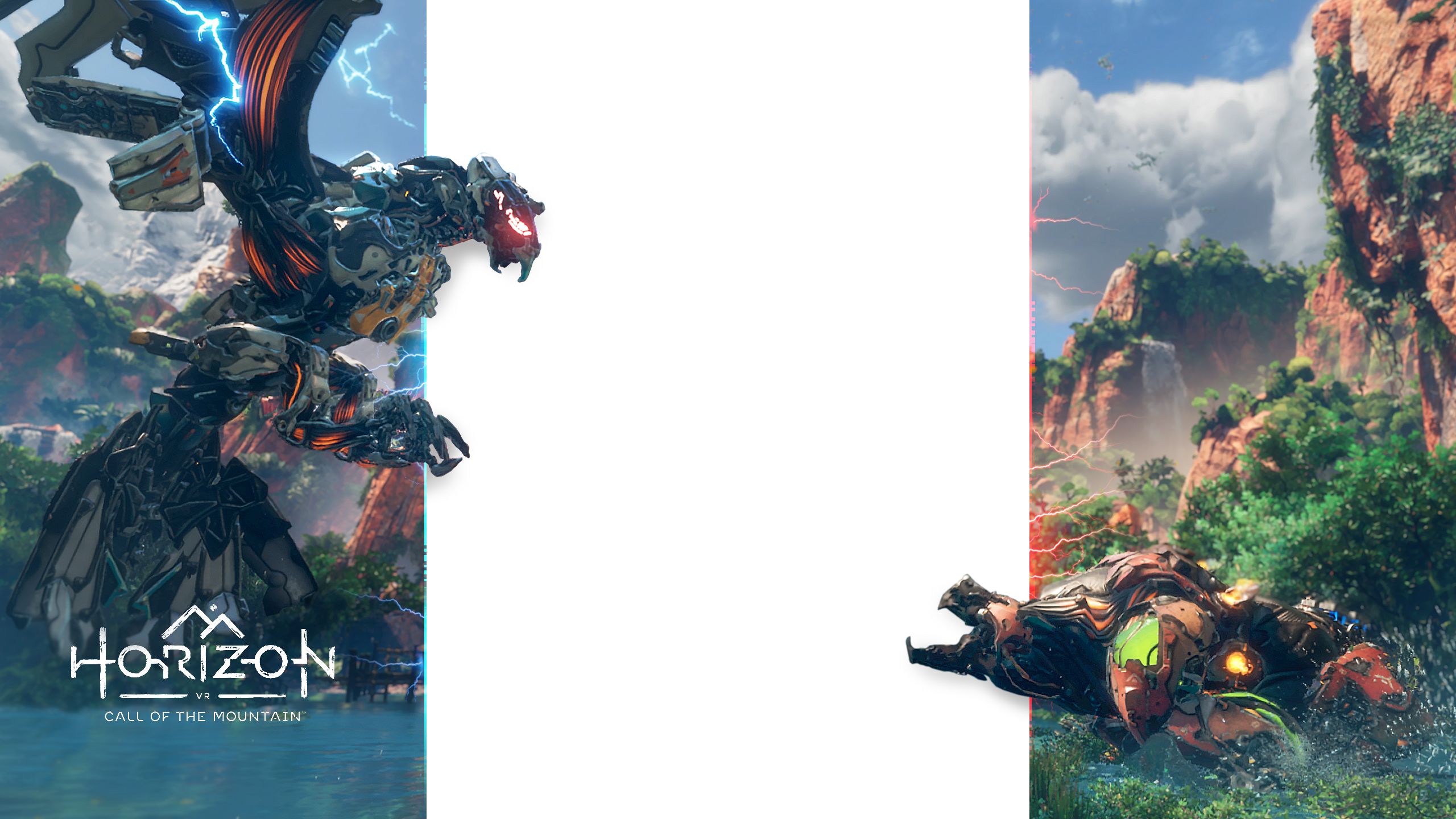
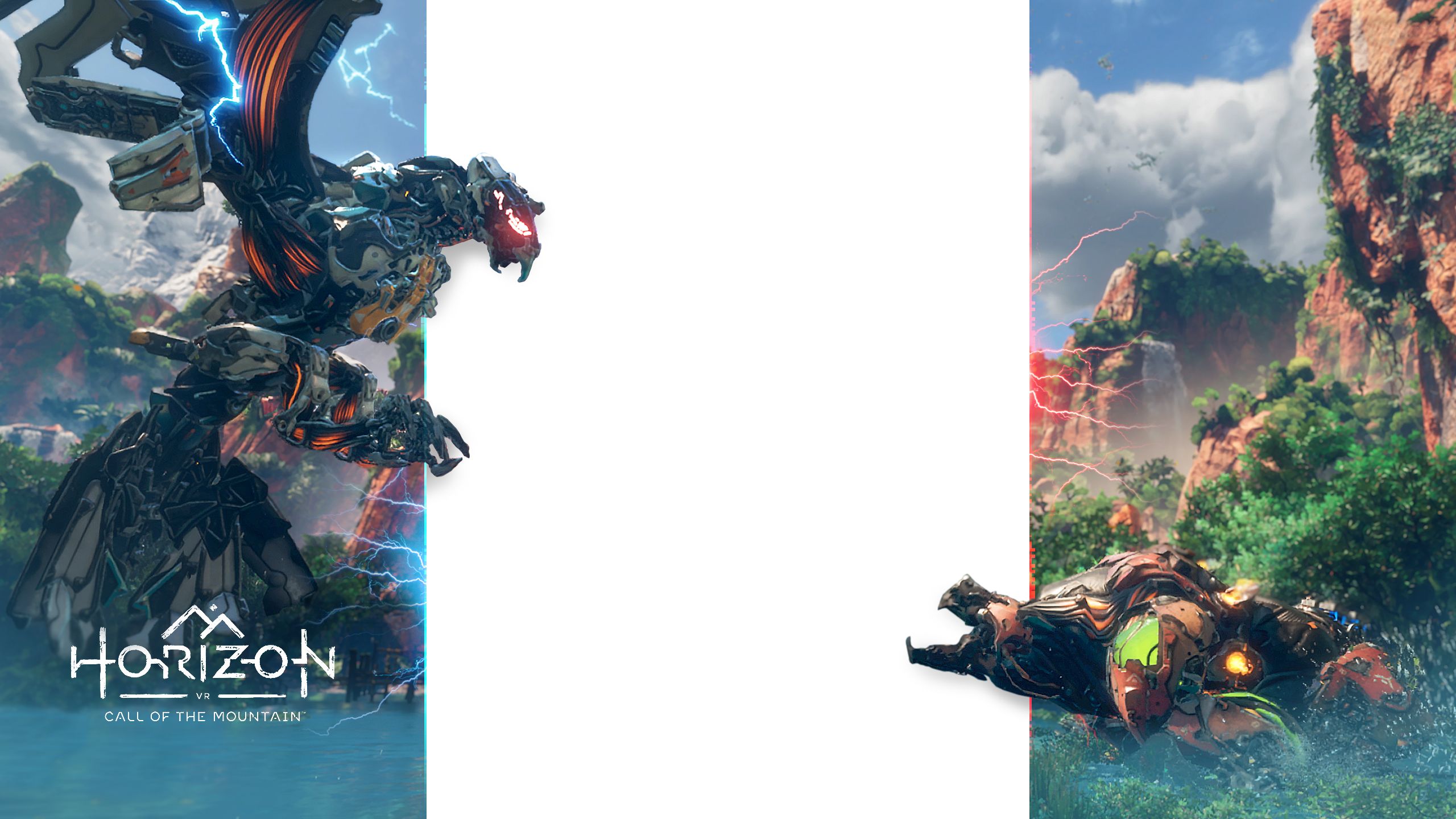


Tentacular

What if you were going about your life when you discover that you’ve been deceived, and you are not in fact an ordinary human being, but are actually — as is in fact very much apparent — a colossal tentacled sea beast? Tentacular sees the player inhabit the semi-submerged, squiddy body of the creature that is delivered this family revelation, and has to overcome it to make itself a useful member of human society. You and your sucker-covered appendages will be put to work on a series of nifty cartoon islands/puzzle stages as a sort of living crane (and garbage removal specialist, hazardous materials expert and scientific assistant) — lifting, hauling, throwing, slinging and catching all kinds of giant objects for a thankful cast of teensy humans.

Tentacular offers no more and no less than the direct fun of being a giant, powerful and often hilariously clumsy beast, and its intuitive gameplay, colourful little cartoon characters and winning sense of humour make it a great option for casual stints in your headset, as well as for all ages.



Tentacular

What if you were going about your life when you discover that you’ve been deceived, and you are not in fact an ordinary human being, but are actually — as is in fact very much apparent — a colossal tentacled sea beast? Tentacular sees the player inhabit the semi-submerged, squiddy body of the creature that is delivered this family revelation, and has to overcome it to make itself a useful member of human society.
You and your sucker-covered appendages will be put to work on a series of nifty cartoon islands/puzzle stages as a sort of living crane (and garbage removal specialist, hazardous materials expert and scientific assistant) — lifting, hauling, throwing, slinging and catching all kinds of giant objects for a thankful cast of teensy humans.

Tentacular offers no more and no less than the direct fun of being a giant, powerful and often hilariously clumsy beast, and its intuitive gameplay, colourful little cartoon characters and winning sense of humour make it a great option for casual stints in your headset, as well as for all ages.



Unplugged




If I’m honest, I didn’t really expect to enjoy Uplugged, which bills itself as an “air guitar simulator”. The tutorial didn’t bode well for me either, as I was guided through what to do by Satchel, guitarist for the comedic glam metal band Steel Panthers, who kept calling me a nerd. His instructions were clear enough, though: grab a guitar in virtual space, then slide your left controller/hand along the fret and press the right combination of triggers to match the upcoming notes of the song you are playing, and make a strumming motion with your right hand/controller to sound them at the correct time as they go past. And when I got into it with a few familiar tracks on offer in the game, this turned out to be surprisingly fun.

Standing on the virtual stage with an enthusiastic crowd stretching away in the darkness ahead of me, I found myself getting into some rock star fantasies I wouldn’t have actually said I possessed, hitting big chords with motions that were a lot more performative than strictly necessary. This unleashing of an inner, repressed rock god is perhaps also what made Unplugged comfortably the most physical exercise of any of the VR titles I played — I often ended up with seriously sore wrists and sweating all over the inside of my headset (do you look like an idiot to anyone watching you play this game? Undoubtedly). Unplugged unfortunately seemed to have the twitchiest eye/head tracking of the games I’ve played in PSVR2, with things occasionally jumping around annoyingly in the virtual space, and the in-game song list could use a few more big hits. But all-in-all, you have to sort of love the goofy charm of a game where you can physically reach up to catch the underwear the audience is throwing at you after a big performance.




Unplugged

If I’m honest, I didn’t really expect to enjoy Uplugged, which bills itself as an “air guitar simulator”. The tutorial didn’t bode well for me either, as I was guided through what to do by Satchel, guitarist for the comedic glam metal band Steel Panthers, who kept calling me a nerd. His instructions were clear enough, though: grab a guitar in virtual space, then slide your left controller/hand along the fret and press the right combination of triggers to match the upcoming notes of the song you are playing, and make a strumming motion with your right hand/controller to sound them at the correct time as they go past. And when I got into it with a few familiar tracks on offer in the game, this turned out to be surprisingly fun. Standing on the virtual stage with an enthusiastic crowd stretching away in the darkness ahead of me, I found myself getting into some rock star fantasies I wouldn’t have actually said I possessed, hitting big chords with motions that were a lot more performative than strictly necessary. This unleashing of an inner, repressed rock god is perhaps also what made Unplugged comfortably the most physical exercise of any of the VR titles I played — I often ended up with seriously sore wrists and sweating all over the inside of my headset (do you look like an idiot to anyone watching you play this game? Undoubtedly). Unplugged unfortunately seemed to have the twitchiest eye/head tracking of the games I’ve played in PSVR2, with things occasionally jumping around annoyingly in the virtual space, and the in-game song list could use a few more big hits. But all-in-all, you have to sort of love the goofy charm of a game where you can physically reach up to catch the underwear the audience is throwing at you after a big performance.



After
The Fall

Games have been replicating more or less the exact formula of Left 4 Dead for 15 years now, so it probably makes sense that it’s made its way to the VR realm. After The Fall takes place in a post-apocalyptic future where a perpetually icy earth is overrun by zomb — uh, sorry, overrun by the ‘‘Snowbound’’ — and human survivors have to leave those safe havens they have in teams of four to gun wave after wave of them down in between safe rooms. As in Left 4 Dead, enemies spawn in different places in each run and tougher, specialised monsters will arrive every so often to mix things up. In between missions you’ll use ‘‘harvest’’ from kills to improve your arsenal. It’s all very familiar in a game mechanic sense, then, and what story there is is bare-bones. The look of the game can probably also be described as ‘‘serviceable’’, with samey environments and the odd graphical glitch.
All that said though, there is something about having the ravenous horde sprinting very three-dimensionally towards your own soft, clawable face that really freshens up this formula. If you have ever fancied yourself an action hero, After The Fall is the game to just test how you’d go under pressure and blazing away at an implacable scrum of foes with a gun in each hand (don’t forget to reload!), which the clever haptics in the PSVR2’s controllers and headset make feel properly visceral. You can ead out with three refreshingly competent AI teammates, or jump into co-op easily with friends or strangers from the online lobby. After the Fall isn’t reinventing the wheel, but it’s a lot of fun, and is executed well enough in VR to make this familiar game type feel different.


The Weekend Mix was provided a Playstation 5 and PSVR2 for a review period by Sony.
Product/gameplay images and videos supplied.
Page design/Illustrations: Mathew Patchett


After
The Fall

Games have been replicating more or less the exact formula of Left 4 Dead for 15 years now, so it probably makes sense that it’s made its way to the VR realm. After The Fall takes place in a post-apocalyptic future where a perpetually icy earth is overrun by zomb — uh, sorry, overrun by the ‘‘Snowbound’’ — and human survivors have to leave those safe havens they have in teams of four to gun wave after wave of them down in between safe rooms. As in Left 4 Dead, enemies spawn in different places in each run and tougher, specialised monsters will arrive every so often to mix things up. In between missions you’ll use ‘‘harvest’’ from kills to improve your arsenal. It’s all very familiar in a game mechanic sense, then, and what story there is is bare-bones. The look of the game can probably also be described as ‘‘serviceable’’, with samey environments and the odd graphical glitch.
All that said though, there is something about having the ravenous horde sprinting very three-dimensionally towards your own soft, clawable face that really freshens up this formula. If you have ever fancied yourself an action hero, After The Fall is the game to just test how you’d go under pressure and blazing away at an implacable scrum of foes with a gun in each hand (don’t forget to reload!), which the clever haptics in the PSVR2’s controllers and headset make feel properly visceral. You can ead out with three refreshingly competent AI teammates, or jump into co-op easily with friends or strangers from the online lobby. After the Fall isn’t reinventing the wheel, but it’s a lot of fun, and is executed well enough in VR to make this familiar game type feel different.












